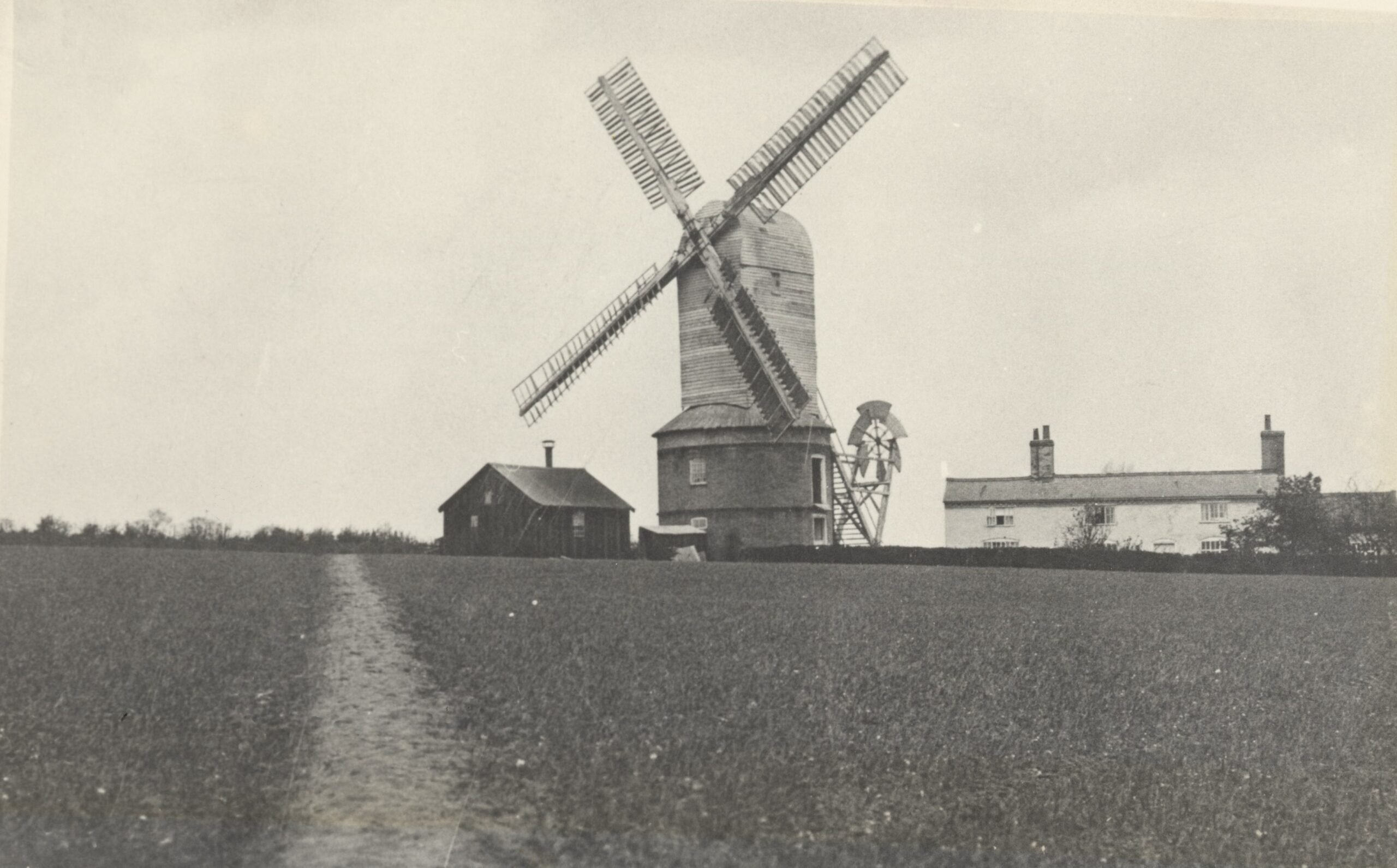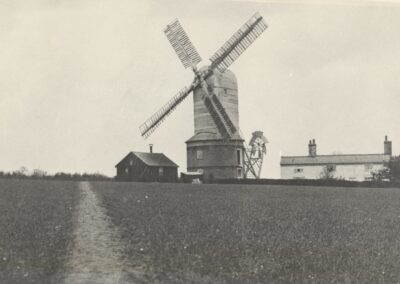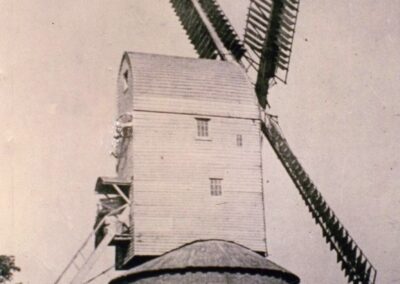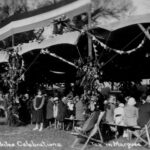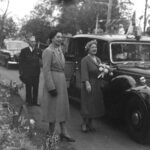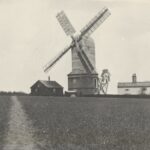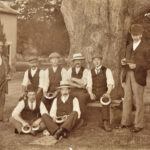The mill in the photographs stood at the top of Mill Lane, Benhall Green. It was a postmill, so called because the mill machinery stood on a central post – made of sweet chestnut in this Benhall mill.
Postmills were the first windmills, introduced into the UK in the 12th century. Hundreds were built in Suffolk alone. This Benhall mill, built in 1736, would have been altered at some time in order to fit the fantail, the device, patented in 1745, which allowed the sails to be turned automatically to the wind. Previously, postmills had to be turned to the wind by the miller, using a long pole.
Benhall folk may have called the mill in the photograph “the new mill” because when it was built, in 1736, an older windmill was taken down. It stood near the Aldeburgh Road at Friday Street, just where the road crosses the railway line. The “new” mill could have been just one more in a succession of Benhall mills stretching back to the 12th or 13th century.
Before windmills, corn was laboriously ground by hand within each household, if there was no watermill nearby. Windmills allowed the production of flour to be monopolised, because only the rich could afford to build such a large and complex structure. The grinding of corn by hand was actively discouraged, even suppressed, once milling was mechanised. The miller paid rent to the local lord of the manor. Farmers paid the miller to grind their corn, in cash or in kind – a proportion of the flour. Milling was often combined with baking and some millers were also farmers. The plea, in the Lord’s Prayer, “Give us this day our daily bread” had a very real and powerful meaning for our ancestors. Bread was the staple of the medieval diet; the routines of seedtime and harvest determined the life of the village, the success of failure of the corn crop, the price of grain and flour, were matters of life and death; millers were powerful, central figures in the rural economy featuring in many traditional songs and stories, not always to their advantage.
Benhall Millers
Millers recorded at the “new” mill include:
- John Elmy C 1760
- Francis Swan C 1780
- John Kent C 1802
- George Kitson C 1820
- David Reynolds C 1840 -1877
In 1851 George Batley was apprentice to miller David Reynolds. How do we know this? Not only from the 1851 census which shows David Reynolds employing and housing 2 men, George Batley from Benhall and Robert Rackham from Snape, but also because during recent renovation at the Mill House the following was found for George Bately dated 9th December 1851.
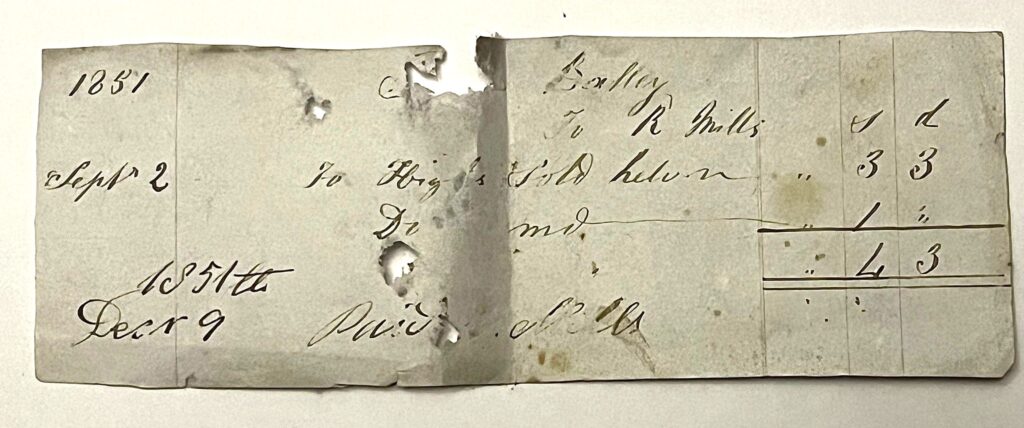
We don’t know what happened to George as he is isn’t on the 1861 census at the Mill.
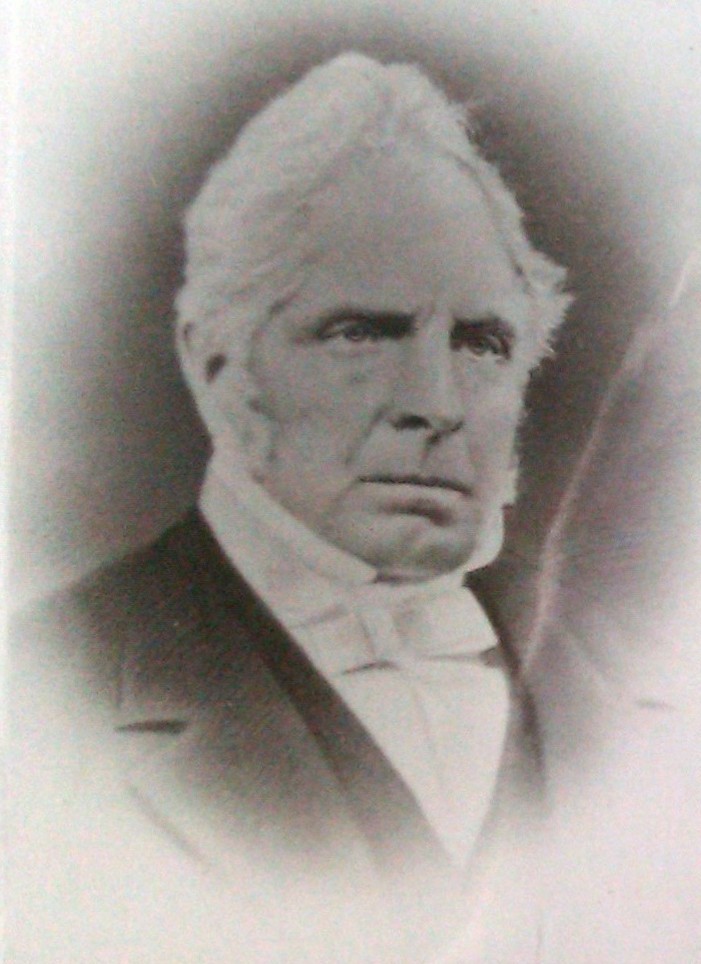
David Reynolds, Miller at Benhall Green
Halesworth Times & East Suffolk Advertiser 8th September 1868:
On 2nd September 1868 an accident occurred at Benhall Mill. It appears that Mr. D. Reynolds, miller of Benhall, during the day had a wheat stack thrashed out and R. Bloomfield, who was in the employment of Reynolds, was sent with a horse and cart, accompanied by Isaac Churchyard to Mr. Smyth’s, farmer, to fetch a dressing machine.
The machine was placed in the cart, Churchyard getting into the cart to keep the machine steady. Bloomfield sat on the front of the cart to drive the horse. Suddenly the horse started off, jerking Bloomfield from his seat, and he fell under the wheel, which passed over his chest. Churchyard’s position was far from an enviable one, the horse starting at full gallop, with the reins dangling at his heels; but he did not lose his presence of mind, as he stepped to the front of the cart, patted the horse and spoke to him which stopped at a gate after having gone about 100 yards. He instantly tied up the horse and ran back.
Bloomfield, with some assistance, was taken home. Mr. Ling, the surgeon, was soon in attendance and hopes are entertained that no bones are broken, but his chest is much bruised and we fear some days must elapse before he can take up his employment.
Millers after David Reynolds include:
- Robert Bloomfield 1883 to 1907
- William Frank Balls 1908 to 1911
- John George Bloomfield
From all accounts John George Bloomfield was a remarkable man. The son of the Benhall Miller he caught his hand in the mill cogs when he was aged seven.
Per John’s son Dennis Bloomfield in an interview in 1998 : The doctor cut it off with a saw, no anaesthetic. They kept his hand in a pickling jar in the Saxmundham surgery for years. There was little he couldn’t do, he tied corn sacks with his good hand and his teeth.
Local milling declined everywhere from the 1870s following the import of bulk grain from Russia and Canada, when steam mills were built close to the docks. This made supplies of flour more secure at the same time as the railway network was making regular distribution easier; fluctuating prices and local gluts and scarcities of grain were gradually consigned to history.
The day of the windmill was over and the postmill in Benhall was demolished in the early 1920s with the steps being taken to Saxtead Mill.
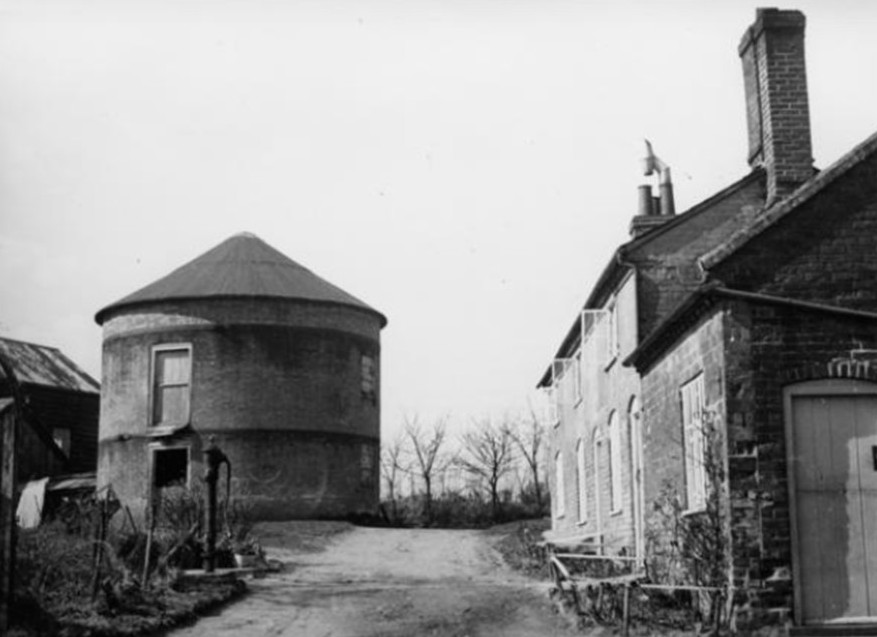
Image taken by Peter C. J. Dolman

